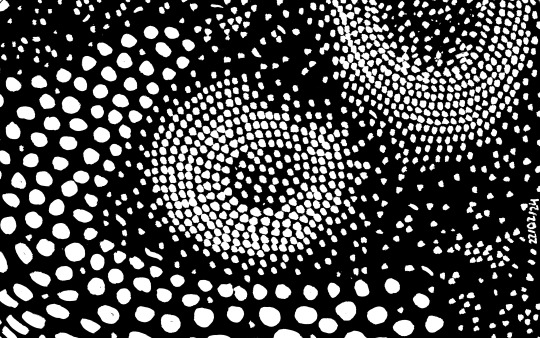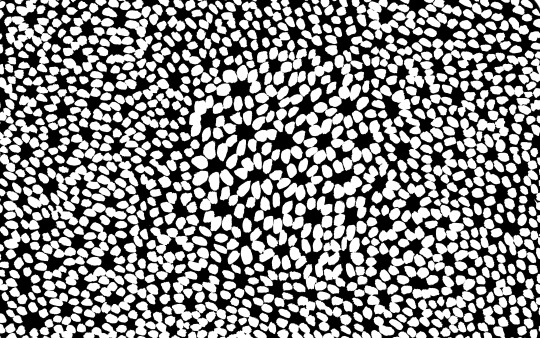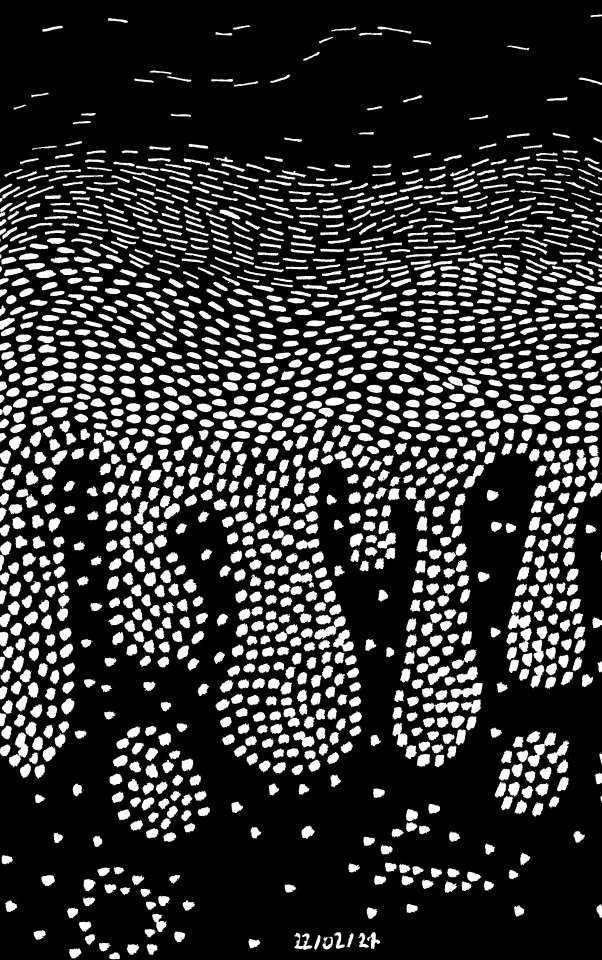#Flow Cytometry
Explore tagged Tumblr posts
Text






science doodles done at the lab during reunions
tertiary lymphoid structures
flow cytometry
leucocytes (back of the sketchbook)
neuroendocrine carcinoma
psoriasis
cellular leiomyoma
#sketch#science#medecine#biology#histology#flow cytometry#pathology#psoriasis#immunology#oncology#leucocyte
73 notes
·
View notes
Text



book club and then to the library! emotional and motivational support while writing papers is a necessity at this point
#phd studyblr#the dallergut dream department store#flow cytometry#phd diary#book club#phd stuff#mbphd#thephdmedic
9 notes
·
View notes
Text
سیتومتری فلو Flow Cytometry
تکنیکی پیشرفته است که برای تحلیل ویژگیهای فیزیکی �� شیمیایی سلولهای فردی در یک نمونه مایع استفاده میشود. این روش با استفاده از لیزر و رنگهای فلورسنت، امکان بررسی پارامترهای متعددی مانند اندازه، گرانولاریته و شدت فلورسانس را فراهم میکند. در زمینه سرطان، این تکنیک بهعنوان ابزاری حیاتی در تشخیص، طبقهبندی و مدیریت درمانی شناخته میشود. در ادامه، جزئیات کاربردها، چالشها و چشماندازهای آینده این تکنیک بررسی میشود.
مقدمه و تعریف
سیتومتری جریان از دهه 1950 میلادی برای اندازهگیری حجم سلولها توسعه یافت و با پیشرفتهای اخیر، بهویژه در دهههای اخیر، به یکی از ابزارهای کلیدی در تحقیقات زیستی و پزشکی تبدیل شده است. این تکنیک شامل عبور سلولها بهصورت تکتک از یک جریان مایع از مقابل یک پرتو لیزر است، که نور پراکندهشده و نور فلورسنت ساطعشده را اندازهگیری میکند.
در زمینه سرطان، سیتومتری جریان برای شناسایی و تحلیل سلولهای سرطانی، نظارت بر پاسخ درمانی و ارزیابی پروفایل ایمنی بیمار استفاده میشود. بهعنوان مثال، Cleveland Clinic توضیح میدهد که این روش برای ارزیابی مغز استخوان، خون محیطی و مایعات بدن استفاده میشود و در تشخیص بیماریهای عفونی و سرطان نقش دارد.
اصول اولیه سیتومتری جریان در تحقیقات سرطان
برای استفاده از سیتومتری جریان در تحقیقات سرطان، ابتدا سلولها از نمونههایی مانند خون، مغز استخوان یا بافت تومور استخراج و بهصورت سوسپانسیون تکسلولی آماده میشوند. سپس، با استفاده از آنتیبادیهای متصل به رنگهای فلورسنت، نشانگرهای خاص سطح سلول یا پروتئینهای داخلسلولی برچسبگذاری میشوند.
دستگاه سیتومتر شامل سیستمهای هیدرولیکی، نوری و الکترونیکی است. سیستم هیدرولیکی سلولها را بهصورت تکتک از مقابل لیزر عبور میدهد، سیستم نوری نور ساطعشده را جمعآوری میکند، و سیستم الکترونیکی دادهها را به سیگنالهای دیجیتال تبدیل میکند که برای تحلیل با نرمافزار پردازش میشوند.
در تحقیقات سرطان، این روش برای شناسایی سلولهای سرطانی بر اساس بیان نشانگرهای خاص، تعیین پلوییدی DNA و تحلیل چرخه سلولی استفاده میشود. بهعنوان مثال، PMC بیان میکند که سیتومتری جریان برای تحلیل چندپارامتری سلولهای تکتک در محلول مناسب است و در ایمونولوژی، بیولوژی مولکولی و نظارت بر بیماریهای عفونی کاربرد دارد.
کاربردها در تشخیص سرطان
سیتومتری جریان در تشخیص سرطان، بهویژه در بدخیمیهای خونی و تومورهای جامد، نقش مهمی دارد.
بدخیمیهای خونی
در لوسمیها و لنفو��اها، سیتومتری جریان برای تمایز بین انواع مختلف لوسمی، مانند لوسمی لنفوبلاستیک حاد (ALL) و لوسمی میلوئیدی حاد (AML)، استفاده میشود. این روش با استفاده از پانلهای آنتیبادی، بیان نشانگرهای B-سل یا T-سل را تعیین میکند و مرحله تمایز سلولی را مشخص میکند.
بهعنوان مثال، American Society of Hematology توضیح میدهد که ایمونوفنوتایپینگ با سیتومتری جریان برای تشخیص نئوپلاسمهای هماتولوژیک ضروری است و توصیههای کنفرانس بینالمللی بتسدا در این زمینه را ارائه میدهد. همچنین، PubMed نشان میدهد که این روش برای نظارت بر بیماریهای هماتولوژیک و استانداردسازی پروتکلها استفاده میشود.
تومورهای جامد
در تومورهای جامد، سیتومتری جریان برای تشخیص سلولهای توموری در گردش (CTCs) و تحلیل لنفوسیتهای نفوذکننده به تومور (TILs) استفاده میشود. CTCs نشاندهنده پتانسیل متاستاز هستند و تحلیل آنها میتواند اطلاعات پیشآگهی ارائه دهد. ScienceDirect بیان میکند که سیتومتری جریان برای تشخیص CTCs در مایعات بدن، مانند افیوژنهای صفاقی و پلورال، دقیق است و میتواند پیشآگهی بیمار را بهبود بخشد.
بااینحال، تحلیل تومورهای جامد چالشبرانگیز است، زیرا نیاز به هضم آنزیمی برای ایجاد سوسپانسیون تکسلولی دارد. PubMed اشاره میکند که پیشرفتهای اخیر در ابزارها و پروتکلها، استفاده از سیتومتری جریان در تومورهای جامد را تسهیل کردهاند.
نقش در درمان سرطان
سیتومتری جریان نهتنها در تشخیص، بلکه در هدایت انتخاب درمان و نظارت بر پاسخ درمانی نیز نقش دارد.
هدایت انتخاب درمان
این تکنیک با شناسایی نشانگرهای خاص روی سلولهای سرطانی، به انتخاب درمانهای هدفمند کمک میکند. بهعنوان مثال، بیان CD20 در لنفوما نشاندهنده پاسخپذیری به ریتوکسیماب است. همچنین، در سرطان پستان، بیان گیرنده استروژن (ER)، گیرنده پروژسترون (PR) و گیرنده فاکتور رشد اپیدرمی انسانی 2 (HER2) میتواند درمانهای هورمونی یا هدفمند مانند تراستوزوماب را هدایت کند.
GBiosciences بیان میکند که سیتومتری جریان میتواند آنتیژنهای توموری را شناسایی کند و اطلاعات "اثرانگشتی" خاصی از تومور بیمار ارائه دهد، که انتخاب درمان دقیقتر را امکانپذیر میکند.
نظارت بر پاسخ درمانی
سیتومتری جریان برای تشخیص بیماری باقیمانده حداقلی (MRD) پس از درمان استفاده میشود، که میتواند نیاز به درمان بیشتر را نشان دهد. در ایمونوتراپی، این روش تغییرات در جمعیت سلولهای ایمنی و وضعیت فعالسازی آنها را ارزیابی میکند، که با پاسخ درمانی مرتبط است.
بهعنوان مثال، Roswell Park توضیح میدهد که ��یتومتری جریان برای نظارت بر اثربخشی درمان در سرطانهایی مانند لوسمی و لنفوما حیاتی است و به تیمهای مراقبت چندجانبه در برنامهریزی درمان کمک میکند.
چالشها و محدودیتها
با وجود مزایای متعدد، سیتومتری جریان چالشهایی نیز دارد:
کیفیت نمونه: دقت این روش به کیفیت نمونه بستگی دارد، بهویژه در تومورهای جامد که ایجاد سوسپانسیون تکسلولی دشوار است.
پیچیدگی تحلیل دادهها: تحلیل دادههای چندپارامتری نیاز به تخصص دارد و میتواند پیچیده باشد.
هزینه و دسترسی: دستگاههای سیتومتر گرانقیمت هستند و نیاز به پرسنل آموزشدیده دارند، که دسترسی به آنها را محدود میکند.
استانداردسازی: نبود پروتکلهای استاندارد شده بین آزمایشگاهها میتواند reproducibility نتایج را تحت تأثیر قرار دهد.
Bio-Rad اشاره میکند که مشکلات رایج مانند سلامت سلول و پروتکلهای رنگآمیزی میتوانند کیفیت دادهها را تحت تأثیر قرار دهند و نیاز به راهحلهایی برای بهبود دارند.
جهتگیریها و فناوریهای نوظهور
سیتومتری جریان در حال تکامل است و فناوریهای نوظهوری مانند سیتومتری جرمی (Mass Cytometry یا CyTOF) امکان تحلیل تا 40 پارامتر را فراهم کردهاند، که اطلاعات جامعتری از جمعیتهای سلولی ارائه میدهند.
تکنیکهایی مانند توالییابی RNA تکسلولی میتوانند با سیتومتری جریان ترکیب شوند تا دادههای فنوتیپی و رونویسی را همزمان ارائه دهند. همچنین، هوش مصنوعی و یادگیری ماشین برای تحلیل دادههای بزرگ سیتومتری جریان استفاده میشوند، که الگوها و نشانگرهای زیستی را شناسایی میکنند.
Frontiers بیان میکند که سیتومتری جریان بهعنوان یکی از ابزارهای تحلیلی موفق برای تحلیل فنوتیپ سلولهای ایمنی در نظارت بر تومورهای جامد و بدخیمیهای خونی استفاده میشود.
جدول خلاصه کاربردها
بخش
کاربرد
مثال
تشخیص سرطان خونی
طبقهبندی لوسمی و لنفوما
شناسایی ALL بر اساس نشانگرهای B-سل
تشخیص تومور جامد
تشخیص CTCs و تحلیل TILs
ارزیابی متاستاز در سرطان پستان
هدایت درمان
شناسایی نشانگرهای درمانی
بیان CD20 برای ریتوکسیماب
نظارت بر درمان
تشخیص MRD و ارزیابی پاسخ ایمنی
نظارت بر اثربخشی ایمونوتراپی
نتیجهگیری
سیتومتری جریان ابزاری قدرتمند برای مطالعه و مدیریت سرطان در سطح سلولی است. از تشخیص انواع خاص سرطان تا نظارت بر پاسخ درمانی، این تکنیک اطلاعات حیاتی برای تصمیمگیری بالینی فراهم میکند. با پیشرفت فناوری، نقش آن در پزشکی دقیق سرطان انتظار میرود که گسترش یابد و نتایج بهتری برای بیماران به همراه داشته باشد.
ریل تایم PCR و qRT-PCR
PCR استاندارد و الکتروفورز
کیت های استخراج اسید نوک��وئیک
0 notes
Text
Size, Share & Outlook of the Flow Cytometry Market 2024-2032
The Flow Cytometry Market Revenue was valued at USD 5.34 billion in 2023 and is projected to reach an impressive USD 11.41 billion by 2032, growing at a CAGR of 8.82% during the forecast period from 2024 to 2032. This robust growth is attributed to the increasing adoption of flow cytometry techniques across various sectors, including healthcare, research, and industrial applications.

Market Growth Drivers
The rapid advancements in healthcare diagnostics and the rising prevalence of chronic diseases have propelled the demand for precise and efficient diagnostic tools, such as flow cytometry. The technique's ability to analyze multiple parameters of individual cells rapidly has made it indispensable in areas like immunology, oncology, and stem cell research.
Technological innovations, such as the development of user-friendly and portable flow cytometers, have broadened the application scope of the technology. Furthermore, the integration of artificial intelligence (AI) and machine learning (ML) is enhancing data analysis capabilities, enabling more accurate results and streamlining research processes.
The growing investments in research and development, particularly in the fields of personalized medicine and drug discovery, are also contributing significantly to the market's growth. Emerging economies are witnessing increased adoption of flow cytometry due to improving healthcare infrastructure and supportive government initiatives.
Regional Outlook
North America currently dominates the flow cytometry market, driven by robust healthcare infrastructure, high R&D expenditure, and the presence of key market players. The Asia-Pacific region, on the other hand, is expected to witness the fastest growth during the forecast period, fueled by a rising focus on healthcare modernization and increasing demand for advanced diagnostic tools.
Get Free Sample Report@ https://www.snsinsider.com/sample-request/2858
Future Prospects
The flow cytometry market is poised for sustained growth as innovations continue to reshape the landscape of healthcare and research. The increasing application of flow cytometry in emerging fields like nanotechnology and microbiome studies is expected to create new opportunities for market players. Moreover, the shift toward automation and the adoption of cloud-based solutions for data analysis are likely to streamline workflows and reduce operational costs, making flow cytometry more accessible to a wider range of users.
About Us
SNS Insider is one of the leading market research and consulting agencies that dominates the market research industry globally. Our company's aim is to give clients the knowledge they require in order to function in changing circumstances. In order to give you current, accurate market data, consumer insights, and opinions so that you can make decisions with confidence, we employ a variety of techniques, including surveys, video talks, and focus groups around the world.
Contact Us
Akash Anand – Head of Business Development & Strategy Email: [email protected] Phone: +1-415-230-0044 (US) | +91-7798602273 (IND)
#Flow Cytometry#Flow Cytometry Market#Flow Cytometry Market Size#Flow Cytometry Market Share#Flow Cytometry Market Growth#Market Research
0 notes
Quote
Flow Cytometry
Flow Cytometry Market Unlocking Growth Opportunities: Analysis and Forecast 2024-2032
0 notes
Text
Fluorescence Tags used in Flow Cytometry
7 minutes Fluorescence tags, also known as fluorescent dyes or fluorophores, are crucial for flow cytometry, a technique used to analyze the physical and chemical characteristics of particles in a fluid as it passes through at least one laser. These tags enable the identification and quantification of various cell populations based on their fluorescent properties. Here are some commonly used…

View On WordPress
0 notes
Text
there is truly nothing i hate and don't understand more than immunology
15 notes
·
View notes
Text
Oh please please please dont let this be another cluster
#it would be so much easier to learn flow cytometry if i didnt get a migraine every time i had it scheduled#maybe because flow stresses me out#because im having trouble learning it#because of the migraines#fml
4 notes
·
View notes
Text
what’s everyone’s least favorite fluorophore mine is APC-Cy7
5 notes
·
View notes
Note
Sorry I saw the 1440 chromosomes post and remembered that you were some kind of bio phd candidate and that I was asked to determine ploidy of some plant samples. Got a little too excited and forgot who I was following and why lmao
dont apologize for getting excited!!! nice to see flow cytometry is used in other fields - i had no idea it could be used to determine ploidy. oceanographers mainly use it to count and image phytoplankton cells!! (kind-of plants but not really? photosynthetic adjacents)
#i was just really caught off guard i was like WHO is following me that knows what FLOW CYTOMETRY IS ajfkkggklh#good luck !!! from what i understand techniques are different depending on what youre Doing with the samples#answered#anonymous
4 notes
·
View notes
Text
Love introducing myself to new people at uni they're like 'wow you're doing a phd you must be so smart' and its like
Oh ho ho... you fool... I may LOOK intelligent but I can assure you at any given moment I am not, in fact thinking Smart Thoughts but am actually rotating an image of 2 old men kissing in my mind
#the duality of man#gottem#this is about benthan btw#theyre my current brain rot#yes ill do my silly flow cytometry experiments but ill be thinking about them while i do it#ellie rambles
9 notes
·
View notes
Text
The only thing that can fix me now is flow cytometry (don’t bother putting my cells back together after it ends tho)
2 notes
·
View notes
Text
Flow Cytometry Market: Innovation, Growth & Opportunity
The global flow cytometry market is projected to be valued at USD 6.75 billion in 2025 and is anticipated to reach USD 9.78 billion by 2030, registering a CAGR of 7.69% over the forecast period (2025–2030).
The flow cytometry market plays a vital role in modern biomedical research and clinical diagnostics, offering a powerful tool for analyzing and sorting cells based on their physical and chemical characteristics. Widely used in immunology, oncology, and infectious disease monitoring, flow cytometry enables rapid, high-throughput analysis of individual cells, supporting advances in precision medicine and targeted therapies. As healthcare systems increasingly adopt technologies for early disease detection and personalized treatment approaches, demand for flow cytometry instruments, reagents, and software continues to rise. The market is also being shaped by improvements in automation, integration with AI-driven analytics, and growing applications in areas such as stem cell research and drug discovery.
Key Market Segments
Products & Services
Instruments represent roughly one-third of market revenue (~35%)
Reagents and consumables are growing faster, predicted at CAGR ~8–8.2% over the coming decade
Software, particularly for automated gating and analytics, is the fastest-growing sub-segment (~10% CAGR)
Technology
Traditional cell-based platforms hold over 70% share
Bead-based assays grow at ~7–9% CAGR
Cutting-edge technologies include spectral cytometry, image-enabled sorters, and real-time AI gating like GateNet, which matches human experts in accuracy.
Applications
Clinical diagnostics constitute ~45% of the market
Fastest-growing is stem‑cell/regenerative medicine (~9.8% CAGR)
Significant roles in oncology and immunology, with these niches expected to expand from USD 3.4Bn (2024) to USD 5.5Bn by 2030 (~8.2% CAGR)
Also used in drug discovery, translational research, infectious disease testing, and precision medicine.
End Users
Hospitals and clinics lead (~41% share)
Pharma & biotech companies seeing ~8–9% CAGR.
Diagnostic labs, academic institutions, and CROs are notable growth segments.
Regional Breakdown
North America dominates (approx. 39–40% share); U.S. alone was ~USD���1.43Bn in 2024, forecast to reach USD 2.96Bn by 2033 (~8.4% CAGR) .
Asia‑Pacific is the fastest-growing region (~8.3–9%), driven by China and India’s expanding R&D and healthcare infrastructure
Europe shows solid growth; emerging markets in South America, the Middle East, and Africa are gaining traction.
Market Drivers & Challenges
Drivers
Increasing incidence of cancer, immunodeficiency, and infectious diseases
Migration toward automated, high-parameter systems, coupled with AI-driven workflows enhancing speed and reducing operator dependency
Rising demand from regenerative medicine, cell therapies, and CAR‑T manufacturing pipelines.
Ongoing R&D investments from governments & private sector, including NIH’s $42Bn+ annual biomedical budget.
Challenges
High cost of instruments, reagents, and licensing software
Technical expertise shortage, especially in advanced gating techniques
Regulatory hurdles in clinical deployment and ensuring quality compliance.
Conclusion
The flow cytometry market is entering a golden era, driven by escalating clinical demand, technological leaps, and smart automation. With robust growth rates (~7–9% CAGR) and a projected market approaching USD 10–12Bn by 2030, it offers fertile ground for both established industry leaders and nimble innovators. As AI becomes embedded and global access broadens, flow cytometry is poised to play an even more pivotal role in precision medicine, cell therapies, and global health.
For a detailed overview and more insights, you can refer to the full market research report by Mordor Intelligence: https://www.mordorintelligence.com/industry-reports/global-flow-cytometry-market-industry?utm_source=tumblr
About Mordor Intelligence:
Mordor Intelligence is a trusted partner for businesses seeking comprehensive and actionable market intelligence. Our global reach, expert team, and tailored solutions empower organizations and individuals to make informed decisions, navigate complex markets, and achieve their strategic goals.
With a team of over 550 domain experts and on-ground specialists spanning 150+ countries, Mordor Intelligence possesses a unique understanding of the global business landscape. This expertise translates into comprehensive syndicated and custom research reports covering a wide spectrum of industries, including aerospace & defense, agriculture, animal nutrition and wellness, automation, automotive, chemicals & materials, consumer goods & services, electronics, energy & power, financial services, food & beverages, healthcare, hospitality & tourism, information & communications technology, investment opportunities, and logistics.
For any inquiries or to access the full report, please contact:
[email protected] https://www.mordorintelligence.com/
#flow cytometry market#flow cytometry market size#flow cytometry market share#flow cytometry market trends
0 notes
Text
South Korea Flow Cytometry Market Growth Forecast (2024–2033)

In South Korea, flow cytometry has become a game-changing technique thanks to developments in both industry and research applications. Applications for this adaptable technology range from industrial biotechnology to clinical diagnostics by enabling high-throughput study of individual cells. With major contributions from major organizations like Becton, Dickinson and Company, Danaher Corporation (Beckman Coulter), and Thermo Fisher Scientific Inc., South Korea's dedication to innovation and R&D spending has accelerated the adoption of flow cytometry.
Despite obstacles including expensive prices and complicated technology, the South Korean flow cytometry industry is expected to grow at a promising rate because of government programs and rising investments in biotech and healthcare.
The South Korea flow cytometry market was valued at $74.55 million in 2023 and is projected to reach $244.5 million by 2033, growing at a robust CAGR of 12.89% during the forecast period (2024-2033). Investments in flow cytometry in the country saw a significant year-on-year increase of 23.23% from $431.3 million in 2020 to $531.5 million in 2021.

SWOT Analysis
Strengths • Strong emphasis on R&D, with investments growing by 23.23% in one year. • Versatile applications across clinical, research, and industrial sectors. • Advanced technological offerings from global leaders like BD and Thermo Fisher Scientific.
Weaknesses • High cost of equipment, ranging from $100,000 to $500,000 per unit, limits accessibility for smaller institutions. • Technological complexity necessitates specialized training and expertise.
Opportunities • Increasing healthcare investments and an aging population with rising demand for diagnostic services. • Advancements in automation and AI integration in flow cytometry systems. • Growing adoption in emerging applications like immunotherapy and cell-based assays.
Threats • Economic downturns potentially impacting healthcare and research funding. • Dependence on imported equipment increases vulnerability to supply chain disruptions.
Key Regulatory Bodies
1. Clinical and Laboratory Standards Institute (CLSI): • Provides guidelines for assay validation, instrument monitoring, and quality control. • Relevant guidelines include: o H62: Validation of Assays Performed by Flow Cytometry o H43-A2: Clinical Flow Cytometric Analysis of Neoplastic Hematolymphoid Cells o H52-A2: Red Blood Cell Diagnostic Testing Using Flow Cytometry
2. National Institute of Standards and Technology (NIST): • Focuses on creating standards for quantitative flow cytometry measurements. • Collaborates with South Korea’s Korea Research Institute of Standards and Science.
Who are the key players in the South Korean flow cytometry market?

Gain a comprehensive market overview from industry experts and unlock valuable insights to drive your business growth. Download our sample now!
Gain deep information on Healthcare Vertical. Click Here!
Conclusion
The market for flow cytometry in South Korea is expected to increase significantly due to rising biotechnology and healthcare investments, technological breakthroughs, and growing diagnostic and research applications. South Korea is positioned as a major player in the global flow cytometry scene despite obstacles including high costs and dependency on imports, as well as opportunities in automation, AI integration, and developing clinical applications. The trajectory of the South Korean flow cytometry market over the next ten years will be further supported by strategic partnerships and adherence to strict regulatory standards.
#South Korea Flow Cytometry Market#South Korea Flow Cytometry Industry#South Korea Flow Cytometry Report#health#healthcare
0 notes
Text
The power of Immunophenotyping
Let’s dive into the fascinating world of immunophenotyping and its monumental role in advancing healthcare and medical research. Unlocking Cell Secrets: The Power of Immunophenotyping in Modern Medicine In the realm of biology and medicine, understanding the minute details of cellular makeup isn’t just academic—it’s a crucial aspect of diagnosing and treating diseases. Enter immunophenotyping,…

View On WordPress
0 notes